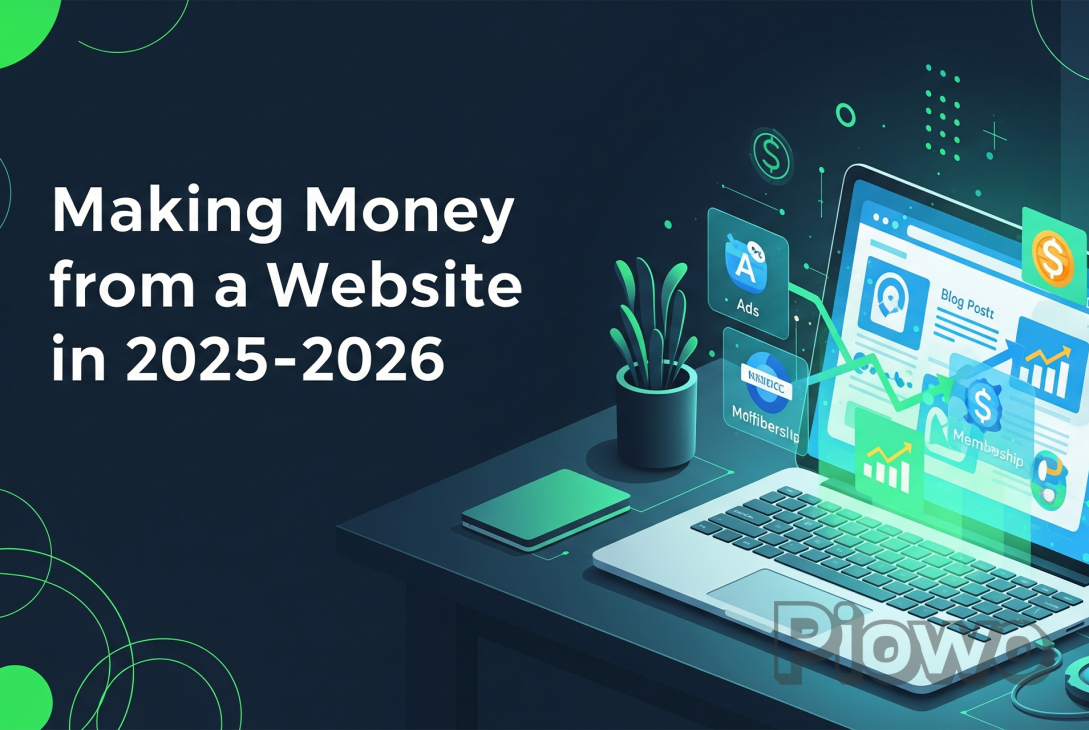Today, it is possible to create a website on WordPress, for example, with very little investment, and start making money from it after only a few months.
However, just because it has become easier to generate income from a website does not mean that all bloggers are successful.
Here are the best ways to monetise a website:
If you are just starting out, it may seem difficult, but once you take the plunge, it will become very easy. Beyond simply recouping the cost of creating the website, it can become a source of income in its own right.
While many people think that blogging is dead, this is of course not true! If you can attract a certain amount of traffic, you can monetise this audience using various strategies that you will need to adapt to your specific situation.
Obviously, this doesn’t happen overnight. First, you need to work consistently to get enough regular visitors, and driving traffic to your site can be difficult.
However, once your website receives enough traffic to justify its existence and the value of its content is recognised, it’s time to start monetising.
So, let’s take a look at the most effective monetisation strategies for generating income.
- Monetise your website by displaying advertisements.
Displaying advertisements is perhaps the oldest and simplest way to monetise your website and start generating passive income. The more traffic you have, the more likely advertisers are to want to display their ads on your site. However, if you’re just starting out, there are still plenty of options!
One option is to sign up for Google’s AdSense programme, which places Google ads in strategic locations on your website. As with all Google services, registration is free, and the company takes care of everything, so all you have to do is collect the payment.
Other companies, such as Mediavine and AdThrive, specialise in working with bloggers to help them place ads on their websites. Choose the option that suits you best!
- Affiliate marketing
Affiliate marketing is a relatively new way to monetise a website, but it has quickly become the most popular method. When you are affiliated with a brand or website, you publish and share information about its products. When someone buys a product through you, you receive a commission.
Depending on the affiliate programme, you can earn between 10% and 50% commission, but this varies depending on the programmes you have signed up for and, once again, on traffic. Affiliate marketing is particularly relevant if your website is in a specific niche.
There are thousands of brands participating in affiliate programmes, so it’s up to you to find the ones that suit you and sign up for them.
You can also sign up for a programme run by a web giant, such as Amazon Associates, which features ads for products you use or want to promote.
- Sell sponsored articles.
Want to earn money from your website without bombarding your visitors with adverts? This monetisation method allows you to remove all the adverts from your site, so it is as ‘clean’ as possible.
Depending on your traffic, sponsored posts can earn their author a lot of money, especially when combined with contextual ads or links to affiliate products on your site.
The process is simple: someone has a product or service that they want to sell to as many people as possible. They do their research, find sites whose subject matter matches their product and, if yours appears in the results, they contact you to ask if you would agree to write an article promoting their product or service in return for a sum of money.
They will then contact you to ask if you would be willing to write an article promoting their product or service in exchange for a sum of money. They may also offer to send you the product in question so you can review it. You then own the product and can keep it, resell it or use it in a competition to generate new traffic and help your site grow.
- Direct sale of advertising space
This is different from the contextual advertising mentioned above. With this monetisation method, you earn money by selling advertising space directly to advertisers and placing their banners on your website.
You don’t have to go through an advertising network such as Google AdSense, follow the rules they impose and receive the amount they decide when they decide.
So why wouldn’t a company pay you directly to place its banner on your website?
This way, you eliminate the advertising agency and deal directly with the advertiser, often for more money.
- Donation-based monetisation
If you create valuable content and need financial support to develop your site, why not ask for donations? While it’s unlikely that every visitor will donate, if even a small percentage of your several thousand monthly readers do so, you may be pleasantly surprised when you check your account at the end of each month!
It’s easy to create donation buttons on your site that allow users to donate directly via payment processors such as PayPal, Stripe or Fundly.
Create widgets from your preferred platform and position them wherever you like on your site, ensuring they are visible and easy for readers to find.
6. Premium membership system
Not convinced by the previous solution? Here’s an improved donation method: ask visitors for a contribution in exchange for access to certain information on your site.
We’re all familiar with the paywalls used by major news sites, where readers have to pay to access certain content.
If you produce content that you think people would be willing to pay to view, you can use this monetisation solution. There are several ways to do this:
The classic subscription model involves users paying a set amount per month or year to access premium content or enjoy various benefits.
A one-time transaction is another way to monetise, whereby specific content such as a tutorial video, audio download or training course is sold.
A paywall allows users to access content free of charge up to a certain point. Beyond this point, the reader must pay a certain amount to continue reading.
If you have a WordPress site, there are plugins available for each of these options.
- Sell e-books.
Ebooks offer an easy way to monetise your website, as the only cost is the time spent writing the book, which only needs to be done once.
For this to work, however, you need to sell a product that is directly related to the content of your blog.
E-books are profitable and are constantly growing in popularity, which is why it’s becoming increasingly common to come across a website that offers them.
It’s also easy to promote a book across your entire website by adding a call to action (CTA) to the footer or main menu to encourage people to buy it.
You can also promote them directly on social media. It’s easier to say, “Look, I’ve written a great book” than “Come quickly to my website; I’ve placed Google ads there”.
- Sell courses
Selling online courses is another effective way to monetise a website. Of course, this only works if you can develop useful courses in a field of expertise where you are an authority!
Courses work very well across a wide range of subjects and skills, including web development, digital promotion, graphic design, setting up a dropshipping business, growing an Instagram account and setting up a saltwater aquarium.
Decide on the subject you want to teach before designing your programme, and make sure you do some research first: if others are already teaching the same subject, make sure you offer something better.
There are specialised platforms where you can sell your courses and perhaps reach a wider audience than through your website alone.
Can all websites be monetised?
The way in which you monetise a website depends on the type of website you have.
If you have an e-commerce site, it will already allow you to generate income through selling products or services. Conversely, a themed blog does not generate income automatically. However, it is possible to monetise it using various methods.
However, bear in mind that an e-commerce website can generate income in ways other than product sales, such as through sponsored blog posts.
Monetising a blog
A blog is certainly the easiest type of website to monetise. You can place affiliate links, offer paid guest articles, or sell sponsored space in the form of text blocks or advertising inserts.
Monetising an e-commerce website
Here, you need to be more careful! Monetising your e-commerce site should not distract from your core activity of selling products or services.
Monetising a showcase site
If you have a showcase or institutional site, it is rare to seek to monetise it. Its purpose should be to showcase your company or activity. Monetising it could damage your brand image.
affiliate marketing 2026 best ad networks 2026 digital products 2026 earn from blogs 2026 make money online 2026 online income strategies 2026 passive income websites 2026 profitable websites 2026 website monetization 2026 website revenue ideas 2026
Last modified: July 18, 2025













